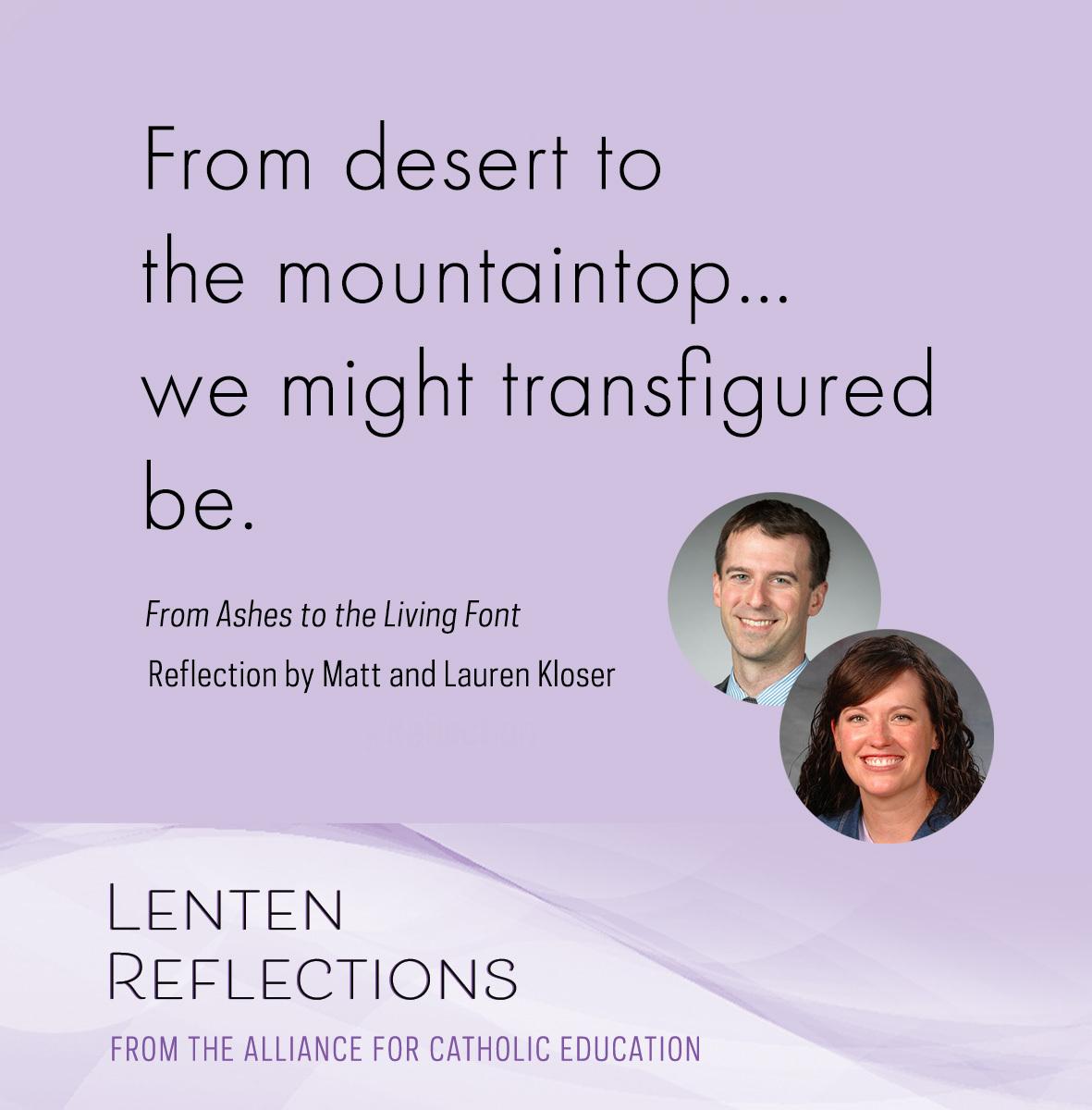From Ashes to the Living Font verses 3-4
From desert to the mountaintop
In Christ our way we see,
So, tempered by temptation's might
We might transfigured be.
From ashes to the living font
Your church must journey still,
Through cross and tomb to Easter joy,
In Spirit fire fulfilled.
When a science teacher and an English teacher sit down to write a Lenten reflection, the conversation starts exactly as one might expect:
Science teacher: All right, “From desert to the mountaintop” - I didn’t realize that Lenten hymns were so rooted in ecology.
English teacher: Hmm, what do we think that a desert might represent? Or what might a mountain top symbolize?
Despite our differing expertise, it was here in this moment of shared focus that meaning began to emerge. So often, we think of deserts as barren places, as wastelands, both physical and spiritual. But deserts often teem with life, though life may lay hidden away or appear different than expected. Cacti protect their own water supply with spiky needles, tiny lizards flicker across the hot sand, and small rodents poke their noses out during the more temperate hours.
In fact, as we wandered through our conversation, it was the mountain top that seemed more devoid of life than the desert. Both places are shaped by extreme temperatures, but above a certain altitude, the summit lacks vegetation or hospitality for animal life. Of course, mountain tops boast grand vistas, and they offer us a chance to gaze out at the mighty wonders that emerge from such a high view.
Still, we thought: it seems a bit lonely, so far removed from everyone and everything else. It seems a bit exposed, which might really be the reason why a mountain top is a perfect place for an encounter with God. After all, God is most interested in our truest, most vulnerable selves, in the ideas, beliefs, and faith that emerge when one’s soul is clearly seen. But to be honest, the thought of that much clarity about the state of our souls made us feel a little anxiety in our illumination.
But we had forgotten, as we so often forget: that in order to travel from the desert to the mountain top, we must pass through the rest of creation as well. We must wander through the desert, where signs of life lay hidden from us and where we learn to grow by straining more deeply for living water. We must live the life we have lived for the past two years of the pandemic with four small children: filled with noise and scattered toys and definitely a toothpaste cap that is perpetually lost, but also an abiding sense of joy in the happy chattering moments when all four children agree on the same game.
We must pass through the grasslands, where tall grasses slow our feet and hinder our view of the path, but where stillness gives us the chance to listen for God’s voice. Here, we look to the teachers, who even as they find their time monopolized by the daily tasks of their craft, still remember to bring the spirit of learning and kindness into the classroom each day. How a second-grade teacher manages both to prepare children for First Holy Communion and referees the intense feelings born out of the daily football scrimmage at recess is proof indeed that our journey poses many obstacles we could never have imagined.
We must pass through the forest, where the path grows dark and twisted with the trees’ gnarled obstructions in our way, but where, among the closeness of the trees, the birds, and the animals, we are reminded of how relationships with others help us see Christ. As tragedy unfolds in Ukraine, we see Christ through the small unifying gestures of children in our neighborhood passing out handmade flags for windowpanes and in the large embrace of refugees, as those in eastern Europe tuck baby supplies into donated strollers, cook nourishing meals for legs long weary from walking, and line up at train stations to invite the stranger into their homes.
And so, when we reach that mountain top and come face to face with God, perhaps it is that we will fully feel the light of this illuminating peak because we will have been transformed by this great earthly journey. We will be tempered in the way that means strengthened by great fire, forged in moments of suffering or temptation, but also fueled by the love and joy of the world around us.
And if a science teacher and an English teacher ever tried to write a sentence together, the last line might be our best attempt: At the mountain top, we won’t be the same people we were in the desert or the grasslands or the forest, but instead, we will be people who are journeying still – propelled by earthly life, transfigured by our connection with God.
 Alliance for Catholic Education
Alliance for Catholic Education
